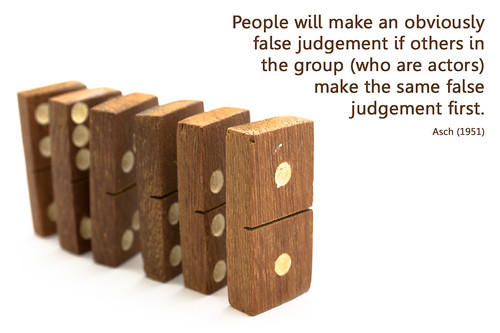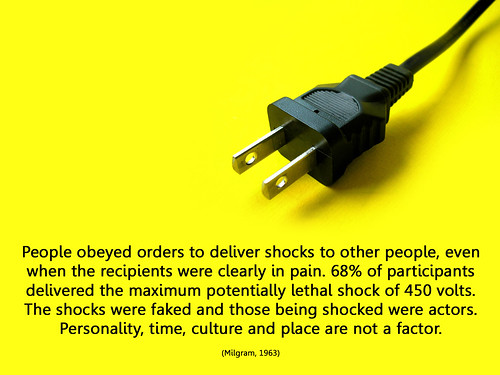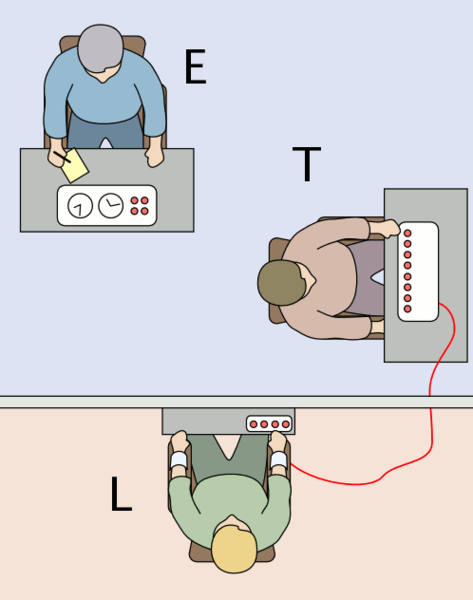Power as a Tool for Good or Evil

According to psychologist Phil Zimbardo (whom we will learn more about shortly), "Evil is the exercise of power, to intentionally harm people psychologically, to hurt people physically, to destroy people mortally, or to commit crimes against humanity."
As we have seen in Lord of the Flies, Jack and Roger are wielding power irresponsibly and with devastating and evil effects. Have you ever seen that in your own life? Unfortunately, I have!
Another commentator wrote: "Evil is as potent a force in human affairs as it ever was. It is also as much of a puzzle. What is it? Why is it? Where does evil reside? In the universe, in society or in you and me? Three devastating psychological experiments in the 20th century seemed to suggest answers to these questions.
The first — the Asch conformity experiment — showed that people could be led into denying the evidence of their own eyes by their desire to conform, blindly to accept the authority of the group.
The second — the Milgram experiment — showed that people were prepared to subject others to potentially lethal electric shocks because they were encouraged to do so by authority figures. And the third — the Stanford prison experiment — showed that perfectly ordinary well-balanced people could be turned into savage tyrants or cowering victims simply by the situations in which they found themselves" ("Don’t kid yourself, we can all be evil", Bryan Appleyard).

We already looked at the Asch conformity experiment, wherein students denied the evidence before their own eyes because others in the room were doing so. Let me introduce you to the Stanford Prison Experiment and the Milgram Obedience experiment. After reviewing these experiments, be ready to
- move on to an activity and discussion about the use of power,
- apply the findings to our end-of-the week discussion of Lord of the Flies, and
- answer reading comprehension questions about the experiments.
Zimbardo's Stanford Prison Experiment
In 1971, Stanford psychology professor Phil Zimbardo conducted an experiment about the effect of roles on individuals, in the infamous Stanford Prison Experiment. Watch at least one of the videos below:
Stanford Prison Experiment
Zimbardo shows how most evil comes from heirarchy(there are a few swear words at about 1:55, in a recording of a prisoner who is starting to "lose it")
Zimbardo shows how most evil comes from heirarchy(there are a few swear words at about 1:55, in a recording of a prisoner who is starting to "lose it")
These days, Zimbardo is researching what he calls "the Lucifer effect" -- why normal people do evil things, as well as why normal people do heroic, noble deeds.
Milgram's Obedience Experiment

Milgram wondered why so many nice German people followed orders to slaughter the Jews, which should have conflicted with their sense of morality. In the words of Wikipedia, Milgram devised an experiment to "measur[e] the willingness of study participants to obey an authority figure who instructed them to perform acts that conflicted with their personal conscience.... The experiments began in July 1961, three months after the start of the trial of German Nazi war criminal Adolf Eichmann in Jerusalem. Milgram devised his psychological study to answer the question: ... 'Was there a mutual sense of morality among those involved?' Milgram's testing suggested that it could have been that the millions of accomplices were merely following orders, despite violating their deepest moral beliefs."
Choose one of the following videos to further explain this experiment to you.
An animated explanation of Milgram's Obedience Experiment.
A reenactment, done in 2009, of the original obedience experiment carried out by Milgram.
This image may also clarify the set-up: The experimenter (E) convinces the subject ("Teacher" T) to give what he believes are painful electric shocks to another subject, who is actually an actor ("Learner" L). Many subjects continued to give shocks despite pleas of mercy from the actors.

The full presentation: TED 2008: Philip Zimbardo shows how people become monsters ... or heroes
Sources:
http://www.timesonline.co.uk/tol/news/uk/article1625713.ece
http://upload.wikimedia.org/wikipedia/commons/thumb/0/0f/Milgram_Experiment_v2.png/473px-Milgram_Experiment_v2.png
http://en.wikipedia.org/wiki/Milgram_experiment
http://www.ted.com/talks/philip_zimbardo_on_the_psychology_of_evil.html
http://www.youtube.com/watch?v=Z0jYx8nwjFQ&feature=related
http://farm4.static.flickr.com/3213/3138594443_72795afa30.jpg
http://farm4.static.flickr.com/3132/3134305700_f580fa28d1.jpg
http://farm4.static.flickr.com/3255/3139448586_548ded78b2.jpg
Last modified: Saturday, May 22, 2010, 2:37 PM